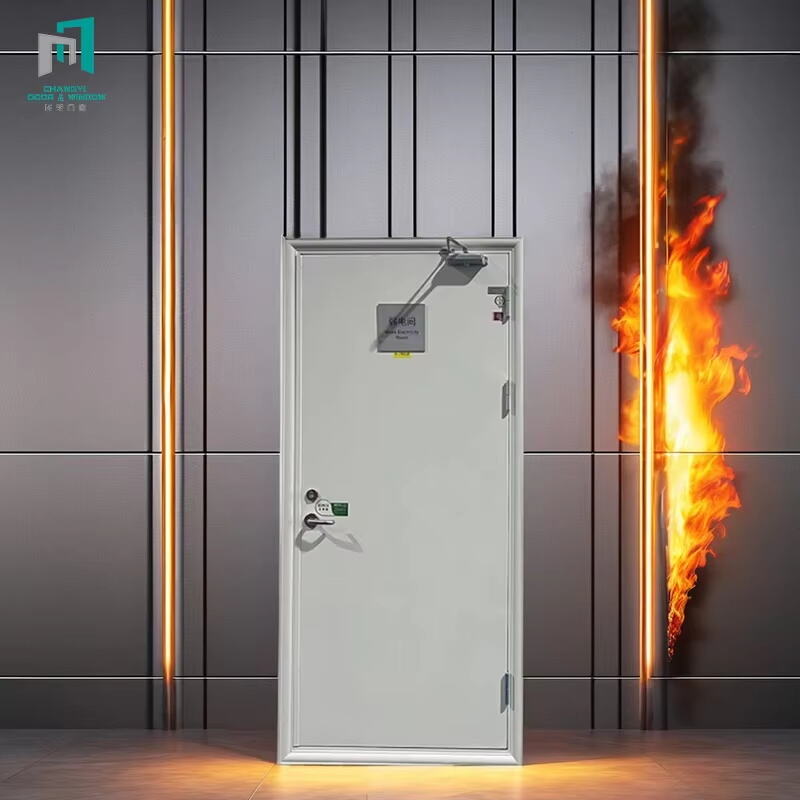Introduction: Briefly explain the importance of fire doors in building safety and compliance.
Fire doors are essential components of a robust fire safety strategy within any building. They serve a critical function by acting as barriers to both flames and smoke, effectively containing the spread of fire and providing vital time for occupants to evacuate safely. These doors are not only designed to protect property but, more importantly, to save lives during emergencies. By compartmentalizing areas of a building, fire doors prevent the rapid spread of fire, thereby reducing the risk of extensive damage and affording emergency Services more time to respond effectively.
Moreover, fire doors play a pivotal role in ensuring compliance with building codes and fire safety regulations. Their installation and maintenance are legally mandated in many jurisdictions to uphold safety standards and reduce liability risks for building owners. Regular inspections and maintenance are crucial to ensure that fire doors remain functional and compliant, thereby safeguarding both occupants and properties from fire hazards. Through adherence to these regulations, building managers can ensure that they meet the necessary safety criteria, ultimately contributing to a safer environment for everyone.
What are Fire Doors?
Fire doors are specialized doors designed to withstand fire and prevent the spread of flames within a building. Essential components in fire safety, their primary purpose is to contain fire and smoke to specific sections of a building, thereby preserving the structural integrity and safeguarding occupants. These doors serve a critical role in passive fire protection systems, ensuring that fire does not easily spread from one part of the building to another. They create fire-resistant barriers, and when properly installed and maintained, can significantly enhance safety during emergencies.
Key features of fire doors include fire-resistance ratings, self-closing mechanisms, and the use of fire-rated materials. Fire-resistance ratings are crucial, as they determine how long a door can withstand exposure to fire, typically ranging between 30 to 90 minutes or more. Self-closing mechanisms are integral to maintaining fire barriers; these mechanisms ensure that the door automatically closes upon fire detection, preventing the spread of flames and smoke. Fire doors are crafted from materials like steel, gypsum, or vermiculite, which effectively block flames and heat. These materials ensure durability and contribute to the door's ability to withstand high temperatures, safeguarding occupants and minimizing property damage.
Proper installation is paramount to guarantee the effectiveness of fire doors. Professional installation ensures that all components are fitted correctly, enhancing the door's performance during critical moments. Without meticulous installation, even the best-designed fire doors can fail to function as intended, highlighting the importance of choosing experienced technicians. Fire doors play a vital role in fire safety compliance, ensuring that buildings adhere to regulations that protect lives by making evacuation safer during emergencies. Their installation is not only a regulatory mandate but a practical necessity in enhancing building resilience against fire-related hazards.
Fire Doors' Role in Safety
Fire doors play a crucial role in passive fire protection by containing the spread of smoke and flames within a building. They are part of the compartmentation strategy, which aims to limit the fire's impact on other parts of a building, allowing time for occupants to safely evacuate and for fire services to arrive. This containment is pivotal, as it buys critical minutes during which emergency procedures can be executed effectively, minimizing the risk to human life and property.
Statistics highlight the effectiveness of fire doors in reducing casualties during fire incidents. According to data from fire safety organizations, properly installed and maintained fire doors can decrease the severity of fire outcomes by up to 50%. This reduction in casualties is attributed to the ability of fire doors to hold back hazardous smoke and flames, thereby preserving escape routes and providing occupants ample time to exit safely. As such, ensuring that fire doors are operative and compliant with safety regulations is fundamental in safeguarding lives during emergencies.
One of the primary benefits of fire doors is their role in maintaining safe evacuation routes during emergencies. These doors are required along escape paths and should be routinely inspected to ensure they remain in optimal working condition. By providing secure and unobstructed passages for evacuation, fire doors support the overall safety strategy of a building. Professional installation and regular maintenance checks are essential to guarantee their effectiveness, which ultimately protects the inhabitants and enhances building safety.
Regulations and Compliance
Legal requirements for fire doors in buildings are crucial to ensure both the safety of inhabitants and compliance with safety standards. The National Fire Protection Association (NFPA) establishes essential guidelines, such as NFPA 80, which outlines the installation and maintenance requirements for fire doors to ensure they function correctly during emergencies. Similarly, local building codes enforce specific requirements tailored to regional hazards and architectural norms. These standards are designed to mitigate fire hazards and ensure that fire doors provide effective barriers against smoke and flames.
Enforcement mechanisms are pivotal in maintaining compliance with these regulations. Certifications like those from Underwriters Laboratories (UL) serve as verification that fire doors meet all necessary safety standards. Fire marshals play a crucial role during inspections, assessing the adequacy of fire doors and ensuring adherence to the stipulated standards. Their inspections typically include checking the integrity of door seals and the functionality of self-closing mechanisms, and verifying that all features align with the certifications.
Non-compliance with fire door regulations can have severe repercussions, including steep legal penalties and increased vulnerability during fire incidents. Buildings that fail to adhere to these regulations may face fines and legal action, particularly if non-compliance contributes to property damage or personal injury during a fire. Furthermore, non-compliance compromises a building’s safety, exposing occupants to elevated risks during emergencies by potentially obstructing evacuation routes or failing to contain smoke and flames effectively.
Maintenance and Inspection
Regular maintenance and inspection are crucial to ensure that fire doors remain effective and preserve their integrity. These routine inspections help identify any problems or defects in the fire doors that might impair their functionality during an emergency. Issues such as warping, damage, malfunctioning hardware, or deterioration of the door's components can arise over time, making regular checks indispensable. Certified professionals typically recommend annual inspections to spot and rectify such problems, thus ensuring that fire doors are always ready to perform their critical role when needed.
Common issues affecting fire doors include warping, damage, and malfunctioning hardware. Warping can compromise the fire door's seal, allowing smoke or fire to pass through, while damaged components may fail during a fire. Malfunctioning hardware, like broken hinges or faulty self-closing mechanisms, also impacts the door's effectiveness. Routine inspections aimed at these common concerns are vital, as they can prevent potential failures in fire door functionality and maintain compliance with fire safety standards.
For best practices, experts advocate for regular inspection schedules—typically recommended to be conducted annually by certified professionals. Such inspections often involve evaluating the door's overall condition, testing its self-closing mechanisms, and checking for wear and tear on essential hardware. Regular maintenance also helps identify problems early, preventing costly repairs or replacements and extending the lifespan of the fire doors. Following these guidelines ensures that fire doors will reliably perform their life-saving functions.
Overall, proper maintenance and inspections are not just necessary for compliance but are foundational for fire safety integrity. By adhering to expert-recommended inspection frequencies and resolving common issues promptly, buildings can ensure that their fire doors function optimally, providing both security and peace of mind.
Conclusion: Emphasize the Importance of Fire Doors for Overall Building Safety
Fire doors are fundamental to overall building safety as they provide critical barriers against the spread of fire and smoke. These doors help to protect lives by allowing occupants additional time to evacuate safely, thereby playing a vital role in any fire safety plan. Building owners are encouraged to take proactive measures to ensure compliance with fire safety regulations and maintain the functionality of all fire doors within their properties. Regular maintenance and adherence to best practices are key to ensuring these doors offer maximum protection.
Emphasizing regular training and awareness for all building occupants regarding emergency procedures cannot be overstated. Keeping everyone informed on the use of fire doors and the steps to take in the event of a fire enhances safety and ensures a well-coordinated response during emergencies. By prioritizing fire door maintenance and training, building management can contribute significantly to reducing the risk of fire-related incidents. Always remember: proactive safety measures save lives.
FAQ
Why are fire doors important in building safety?
Fire doors are crucial because they prevent the spread of fire and smoke within a building, allowing occupants more time to evacuate safely and helping to contain fire damage.
What are the key components of a fire door?
Key components include fire-resistance ratings, self-closing mechanisms, and fire-rated materials such as steel and gypsum.
How often should fire doors be inspected?
Fire doors should be inspected annually by certified professionals to ensure that they remain in excellent working condition.
What are the consequences of non-compliance with fire door regulations?
Non-compliance can lead to legal penalties, increased fire risks, and compromised safety of occupants.

